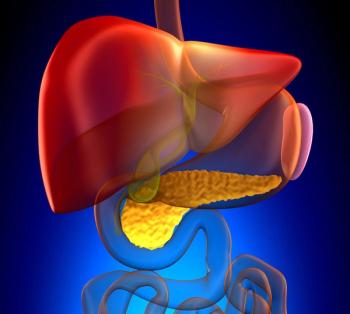
Patients with Cancer at Significantly Increased Risk for COVID-19, Worse Outcomes
Investigators suggested that these study results reveal a need to protect and monitor patients with cancer as part of the strategy to control the COVID-19 pandemic.
Patients with cancer were found to be at significantly increased risk for coronavirus disease 2019 (COVID-19) infection and worse outcomes, especially African American patients, according to findings from a case-control study published in JAMA Oncology.1
The investigators suggested that these study results reveal a need to protect and monitor patients with cancer as part of the strategy to control the COVID-19 pandemic.
“Our study provides an independent extension of 2 recent reports by the COVID-19 and Cancer Consortium registry and can serve as a baseline study of initial COVID-19 risk, racial disparity, and outcomes observations in patients with cancer across the US,” the study authors wrote.
In this retrospective study, researchers evaluated the odds of COVID-19 infections for 13 common cancer types and adverse outcomes among patient electronic health records (EHR) which included a total of 73.4 million patients from 360 hospitals and 317,000 clinicians across 50 US states.
Of the total cohort included in the analysis, 2,523,920 had at least 1 of the 13 common cancers diagnosed within or before the last year, and 273,140 were diagnosed with cancer within the last year. Among 16,570 patients diagnosed with COVID-19, 1200 had a cancer diagnosis and 690 had a recent cancer diagnosis.
Patients who had a cancer diagnosis within the last year were found to be at significantly increased risk for COVID-19 infection (adjusted odds ratio [aOR], 7.14; 95% CI, 6.91-7.39; P < .001), with the strongest association observed for those with recently diagnosed leukemia (aOR, 12.16; 95% CI, 11.03-13.40; P < .001), non-Hodgkin lymphoma (aOR, 8.54; 95% CI, 7.80-9.36; P < .001), and lung cancer (aOR, 7.66; 95% CI, 7.07-8.29; P < .001); the weakest association was reported for thyroid cancer (aOR, 3.10; 95% CI, 2.47-3.87; P < .001). Moreover, of those diagnosed with cancer within the last year, African Americans had a significantly higher risk for COVID-19 infection as compared to White patients; this racial disparity was shown to be largest for breast cancer (aOR, 5.44; 95% CI, 4.69-6.31; P < .001), followed by prostate cancer (aOR, 5.10; 95% CI, 4.34-5.98; P < .001), colorectal cancer (aOR, 3.30; 95% CI, 2.55-4.26; P < .001), and lung cancer (aOR, 2.53; 95% CI, 2.10-3.06; P < .001).
“This finding is consistent with data showing that COVID-19 affects African American individuals at a disproportionately high rate,” noted the authors. “Our study showed similar racial disparity for COVID-19 infection before and after controlling for COVID-19 risk factors, suggesting that other factors, such as social adversity, economic status, access to health care, and lifestyle, may have contributed to this profound racial disparity. Owing to limited socioeconomic, behavioral, and lifestyle information available in the EHR database, we are unable to assess how these factors contributed to this profound racial disparity in patients with cancer.”
Overall, patients with a diagnosis of cancer and COVID-19 experienced significantly worse outcomes (hospitalization, 47.46%; death, 14.93%) than those with COVID-19 without cancer (hospitalization, 24.26%; death, 5.26%; P < .001) and those with cancer without COVID-19 (hospitalization, 12.39%; death, 4.03%; P < .001). Notably, although advanced age is a risk factor for cancer, the current study found that age had no added effect on the risk for COVID-19 infection among patients with cancer.
In an editorial written by Aakash Desai, MBBS, MPH, of the division of Hematology and Medical Oncology at Mayo Clinic, Ali Raza Khaki, MD, of the division of Medical Oncology at the University of Washington, and Nicole M. Kuderer, MD, of the Advanced Cancer Research group, it was suggested that the solutions for disparities observed with COVID-19 pertain predominantly to public policy.2 Specifically, it was proposed that solutions will require:
- large-scale, high-quality epidemiologic data;
- policies that mitigate socioeconomic risk factors as well as health care access disparities;
- and validated risk prediction tools to identify patients at greatest risk from COVID-19 and its complications.
“Clearly, the haunting spotlight of COVID-19 has dramatically illuminated known US health care and societal disparities. This situation should be a wake-up call that brings much-needed improvements in US equity policies, including but not limited to better health care access,” wrote the editorial authors. “Nothing appears more critical for alleviating these disparate clinical outcomes in this time of crisis and beyond.”
References:
1. Wang Q, Berger NA, Xu R. Analyses of Risk, Racial Disparity, and Outcomes Among US Patients With Cancer and COVID-19 Infection. JAMA Oncology. doi: 10.1001/jamaoncol.2020.6178
2. Desai A, Khaki AR, Kuderer NM. Use of Real-World Electronic Health Records to Estimate Risk, Risk Factors, and Disparities for COVID-19 in Patients With Cancer. JAMA Oncology. doi: 10.1001/jamaoncol.2020.5461
Newsletter
Stay up to date on recent advances in the multidisciplinary approach to cancer.














































































